🌼14+ Interesting Flowers Beginning With X With Pictures
Did you know there are several flowers beginning with X? They may not be as popular as roses or lilies, but they are just as beautiful and unique. From rare species to striking foliage, these flowers bring something special to gardens around the world.
In this guide, you wil discover different X flowers, their native regions, growing needs, and what makes each of them unique. Let’s dive in!
🌼 Xanthoceras (Yellowhorn)
🌸 Xerochrysum (Strawflower)
🌺 Xylobium (Orchid)
🌹 Xeronema (Poor Knights Lily)
🌿 Xylosma
💐 Xeranthemum (Immortelle)
🌾 Xanthorrhoea (Grass Tree)
🌻 Xanthostemon
🌷 Xylorhiza (Woody Aster)
Ximenia
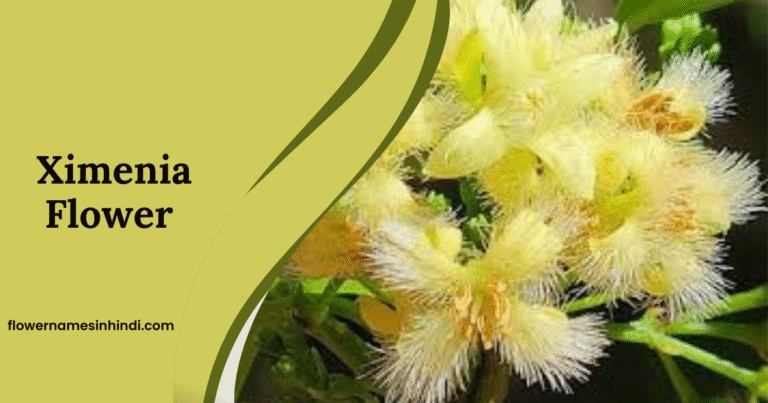
Also called tallow wood, hog plum, or sea lemon, Ximenia is a shrub from the Olacaceae family. It usually grows under four meters but can reach up to seven. Its small, fragrant flowers appear in white, pink, or yellow-green.
Gardeners and farmers value Ximenia for its vitamin C-rich fruit, which people eat fresh, pickle, or use in drinks. The seeds also provide oil that is widely used in skincare. Native to Africa and Madagascar, this plant represents resilience, nourishment, and traditional healing, blooming from spring to early summer.
Traditional medicine uses parts of the Ximenia plant for treating skin conditions, muscle pain, and digestive issues.
| Botanical name | Ximenia americana |
| No. of species | About 8 species |
| Symbol | Resilience, nourishment, traditional healing |
| Blooming time | Spring to early summer |
| Origin/ Native to | Tropical and subtropical regions of Africa and Madagascar |
Xerophyllum: Flowers Beginning With X
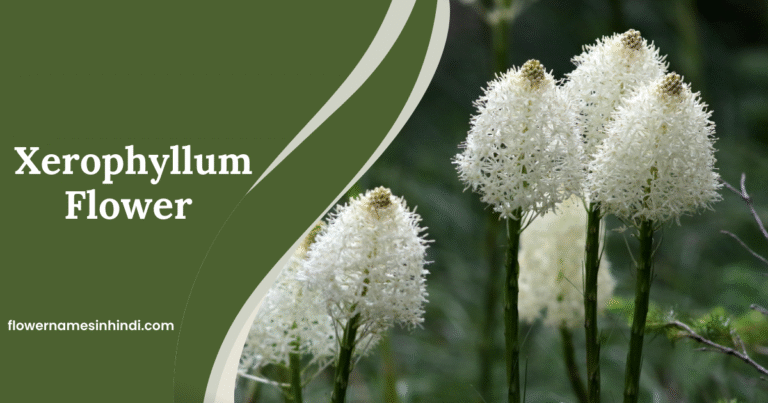
Xerophyllum belongs to the Melanthiaceae family of perennial flowering plants. This plant, also called Rock Lily, grows in rocky cracks, cliffs, and dry landscapes. It produces clusters of small white flowers in late spring and early summer.
Xerophyllum is highly drought-tolerant because of its special features like waxy coats, spines, and strong root systems that help it store water. Gardeners often use it in rock gardens and xeriscapes to add natural beauty to tough landscapes.
| Botanical name | Xerophyllum |
| No. of species | 2 species in this genus |
| Symbol | Resilience, endurance, adaptability |
| Blooming time | often in spring or after rainfalls |
| Origin/ Native to | Deserts and arid regions worldwide (Africa, Americas, Australia) |
Xanthosoma
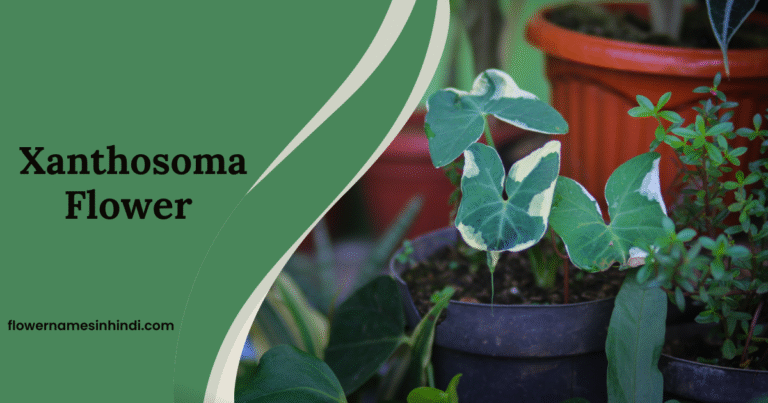
Xanthosoma is a genus of flowering plants in the Araceae family. It is known for its large, heart-shaped leaves and tropical look, while its small flowers are hidden inside a spathe.
The plant grows well in healthy, well-drained soil with partial shade to full sun. Many species also produce edible tubers that serve as staple food in different cultures. Gardeners grow Xanthosoma both indoors and outdoors for its lush and striking foliage.
In many tropical regions, Xanthosoma tubers are used the same way as potatoes and are rich in starch, making them an important food source.
| Botanical name | Xanthosoma |
| No. of species | Over 75 species |
| Symbol | Prosperity, growth, and vitality |
| Blooming time | Rarely flowers, primarily appreciated for foliage |
| Origin/ Native to | Central and South America |
Xerophyta: Flowers Beginning With X
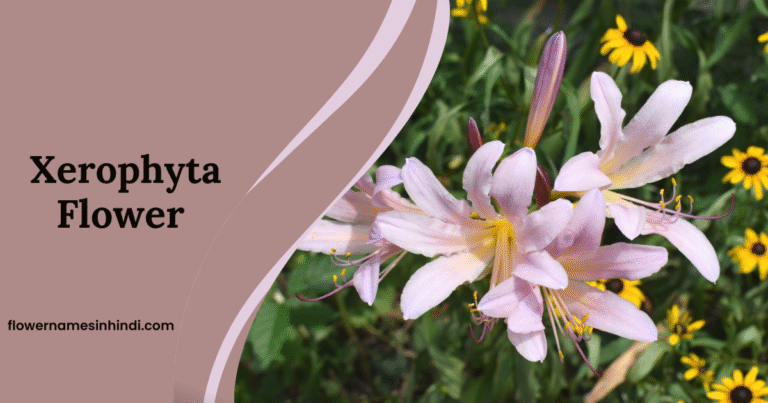
Xerophyta, a genus in the Velloziaceae family, is also called the Resurrection Plant. It can survive long droughts and come back to life when watered. The plant has grass-like leaves and small, bright flowers. In dry times, it dries up and looks dead, but once water is available, it quickly turns green again.
Xerophyta survives by stopping photosynthesis and reducing water loss, which makes it highly resistant to drying. Because of this ability, people often use it in xeriscaping for dry gardens.
| Botanical name | Xerophyta |
| No. of species | Approximately 50 species |
| Symbol | Resilience, endurance, survival |
| Blooming time | Blooms after rainfall, typically in dry seasons |
| Origin/ Native to | Southern Africa and Madagascar |
Xerochrysum
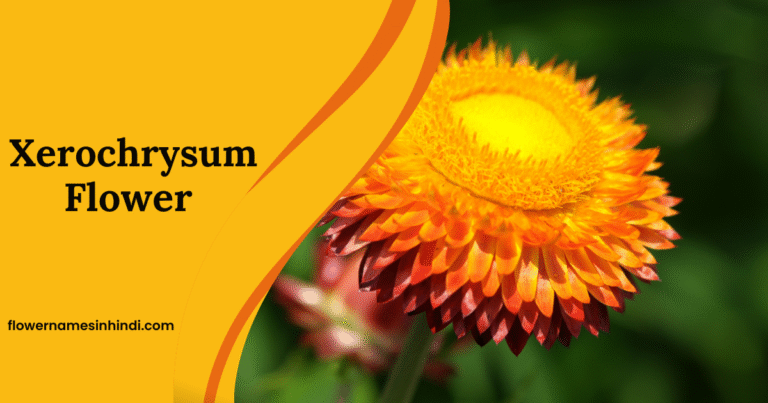
Xerochrysum, also called everlasting daisy or strawflower, belongs to the Asteraceae family. Its papery petals keep their bright colours even after drying, which makes the flowers popular for both fresh and dried arrangements.
They bloom in white, yellow, pink, and red, adding colour from spring to autumn. Xerochrysum grows easily in full sun and well-drained soil. It tolerates drought well, making it perfect for water-wise gardens.
In Victorian times, dried Xerochrysum petals were often used in art, wreaths, and even as colourful confetti for celebrations.
| Botanical name | Xerochrysum bracteatum |
| No. of species | Around 8 species |
| Symbol | Immortality, eternal love, remembrance |
| Blooming time | Summer through early autumn |
| Origin/ Native to | Australia |
Xiphidium: Flowers Beginning With X
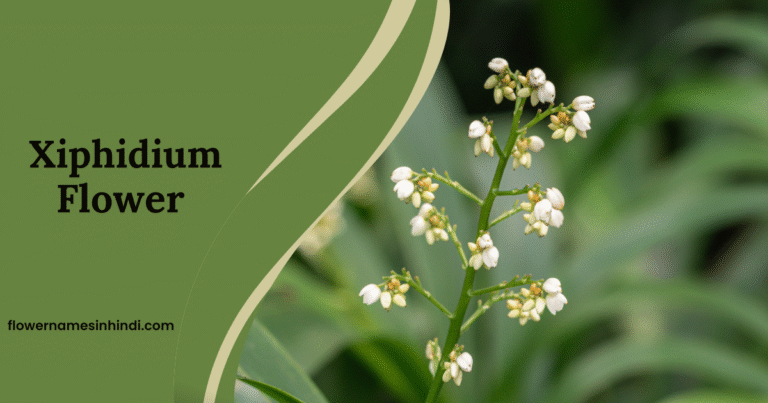
Xiphidium, also called the Star of Swampy Lands, is a tropical perennial from the Haemodoraceae family. It has slender grassy leaves and small star-shaped flowers in white or yellow. This plant naturally grows in marshes and riverbanks, making it perfect for water or bog gardens.
It grows best in moderate shade but can handle full sun in wet conditions. Xiphidium is low-maintenance but may need protection in cold weather. Gardeners often plant it near ponds or water features, where it attracts pollinators and adds a graceful, reed-like look to the landscape.
| Botanical name | Xiphidium caeruleum |
| No. of species | Approximately 1-3 species |
| Symbol | Purity, calmness, resilience |
| Blooming time | Year-round in tropical conditions |
| Origin/ Native to | Central America, the Caribbean, and parts of South America |
Xanthoparmelia
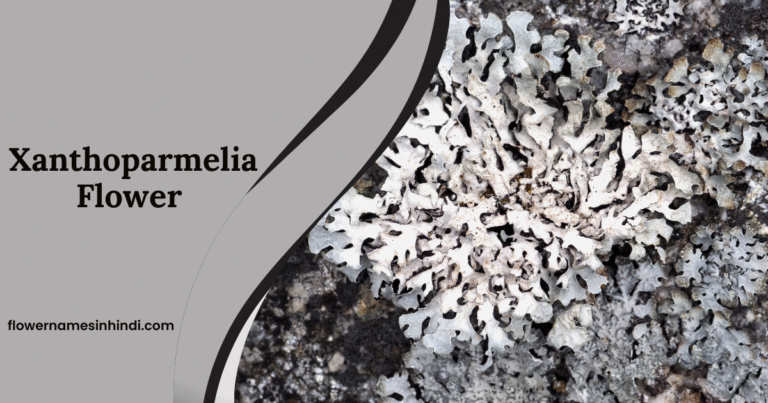
Xanthoparmelia is a genus of lichen often found on rocks and soil in sunny, open areas. It is also called green rock shield or rock-shield lichen. It has a flat, leafy shape and changes colour from green to yellow or brown depending on moisture and habitat.
The lichen is a mix of fungus and algae, which allows it to survive in places where many plants cannot.
Xanthoparmelia plays an important role in soil formation and serves as food for some wild animals. Some species grow in very harsh, dry areas, while others are used in traditional medicine.
| Botanical name | Xanthoparmelia |
| No. of species | Over 800 species |
| Symbol | Endurance, adaptability, resilience |
| Blooming time | year-round |
| Origin/ Native to | Worldwide, particularly in temperate and arid regions |
Xylorhiza: Flowers Beginning With X
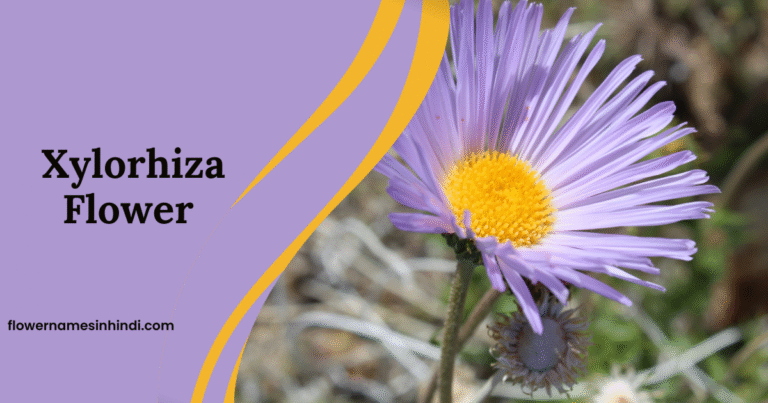
Xylorhiza, commonly known as Woody Asters, is a remarkable flowering plant genus from the Asteraceae family. Their daisy-like blooms paired with woody stems add both beauty and resilience to dry landscapes.
Easy to care for, Xylorhiza grows best in dry, well-drained soil under full sunlight, needing only minimal watering. This makes them an excellent choice for gardeners who want a low-maintenance, water-smart garden.
Their woody stems and deep roots help prevent soil erosion in fragile desert ecosystems.
| Botanical name | Xylorhiza |
| No. of species | Around 20 species |
| Symbol | Resilience, survival, beauty in harsh conditions |
| Blooming time | Spring to summer |
| Origin/ Native to | North America, particularly the southwestern United States |
Xanthorhiza
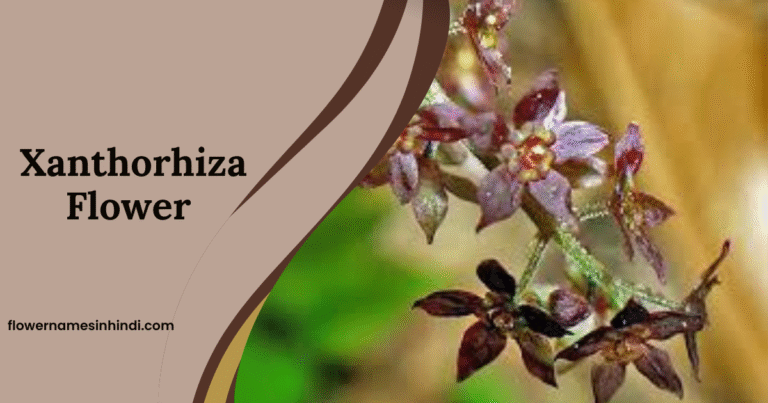
Xanthorhiza, a rare genus in the buttercup family (Ranunculaceae), stands out for its vibrant yellow roots. This striking hue comes from berberine, a natural compound long used for its dyeing and medicinal properties.
In the wild, Xanthorhiza thrives along stream banks in sandy, shaded areas, but when cultivated in brighter light, its autumn foliage turns even more colorful. This semi-woody subshrub typically grows 20–70 cm tall, forming slender stems that create a graceful, bushy appearance.
| Botanical name | Xanthorhiza simplicissima |
| No. of species | Unknown |
| Symbol | Healing, resilience, utility |
| Blooming time | Spring |
| Origin/ Native to | Eastern United States |
Ximenes
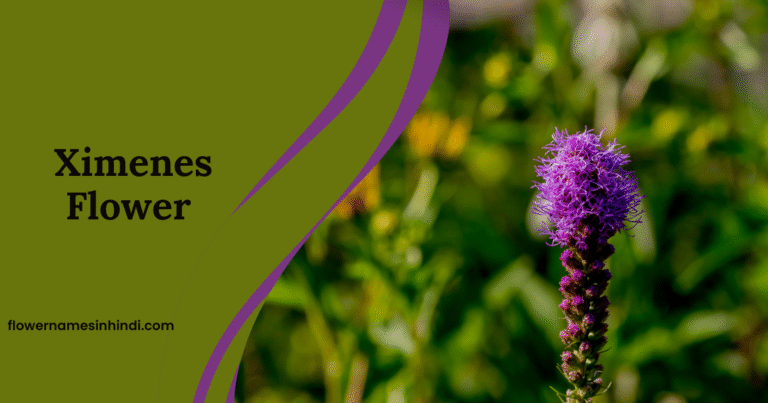
Ximenes is a hardy plant genus known for its strength and adaptability. It thrives in dry, open areas and tolerates harsh environments. Though not widely known, it has great botanical value for its drought resistance and unique flower shape.
Also called the Prairie Star, it bears small, daisy-like flowers with golden petals and a dark centre. Ximenes grows best in dry, well-drained soil and full sunlight. Once established, it needs very little water or care. It attracts pollinators and helps increase biodiversity in gardens and restoration areas.
Ximenesia petals can change shade intensity depending on soil minerals and sunlight exposure, a natural photoprotective adaptation.
| Botanical name | Ximenes |
| No. of species | Varies, multiple species |
| Symbol | Resilience, endurance |
| Blooming time | Spring to early summer |
| Origin/ Native to | Arid and semi-arid regions |
Xyris: Flowers Beginning With X
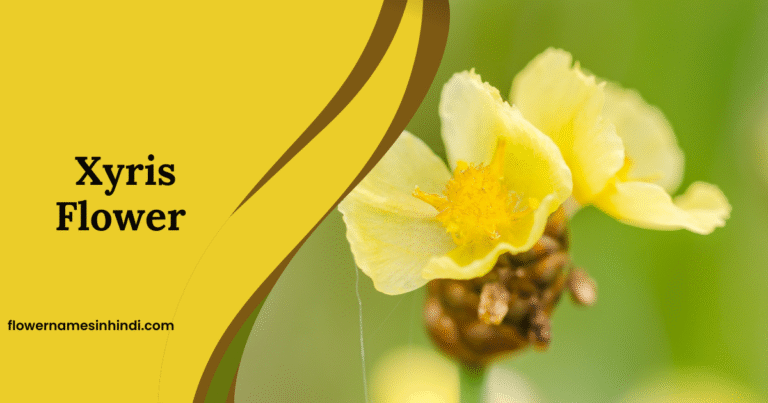
Xyris, also called yellow-eyed grass, belongs to the Xyridaceae family. It grows naturally in marshes and other wet places. This plant has thin, grass-like leaves and bright yellow flowers that bring colour to watery areas.
It grows best in damp soil with full sun or light shade. Gardeners often plant it near ponds or water gardens to add texture and brightness. In drier gardens, it needs regular watering to stay healthy. Xyris also supports wetland wildlife by offering food and shelter.
| Botanical name | Xyris |
| No. of species | Over 250 species |
| Symbol | Beauty in simplicity, wetland ecology |
| Blooming time | Summer to early autumn |
| Origin/ Native to | North and South America, Australia, Southeast Asia |
Xylobium: Flowers beginning with X
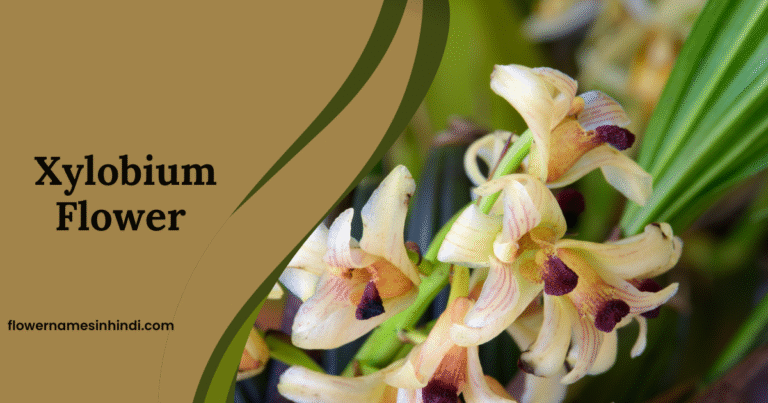
Xylobium is a tropical orchid from the Orchidaceae family, known for its rich green leaves and fragrant, delicate flowers. Although not as popular as other orchids, it stands out for its exotic charm and unique growth style.
Its waxy blooms appear in shades of yellow, brown, or mixed colours, giving each plant a distinct look and scent. Xylobium thrives in warm, humid conditions with indirect sunlight and humus-rich, well-drained soil. It needs regular watering and light feeding during its growing season.
Some species of Xylobium release a sweet, spicy fragrance that intensifies during the early morning to attract specific pollinators like bees and flies.
| Botanical name | Xylobium |
| No. of species | About 35 species |
| Symbol | Elegance, rarity, and resilience |
| Blooming time | Late winter to early spring |
| Origin/ Native to | Central and South America |
Xylopia
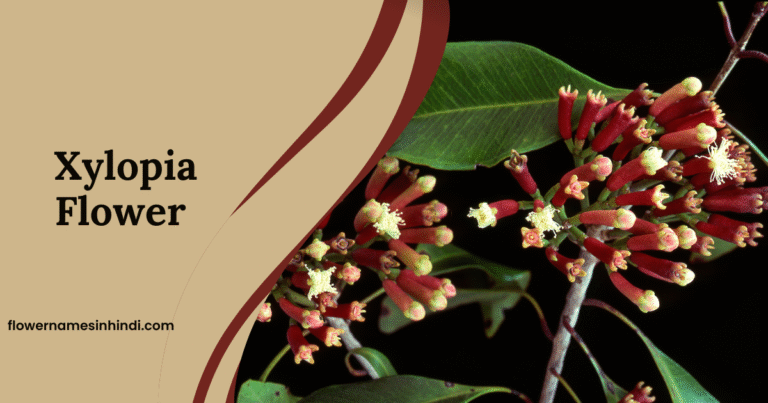
Xylopia belongs to the Annonaceae family and is well known for its aromatic fruits used as spices across Africa and Asia. These trees hold great commercial and cultural value due to their flavorful seeds and fruits used in traditional cooking.
They can grow up to 20 meters tall and have dark green, glossy leaves with small yellowish flowers. Xylopia thrives in tropical climates with well-drained soil and plenty of sunlight. Regular watering is needed during dry seasons to keep the tree healthy.
| Botanical name | Xylopia |
| No. of species | About 160 species |
| Symbol | Spice, health benefits, and natural remedies |
| Blooming time | late spring to summer |
| Origin/ Native to | Tropical regions of Africa, Madagascar, and parts of Asia |
Xylosma: Flowers Beginning With X
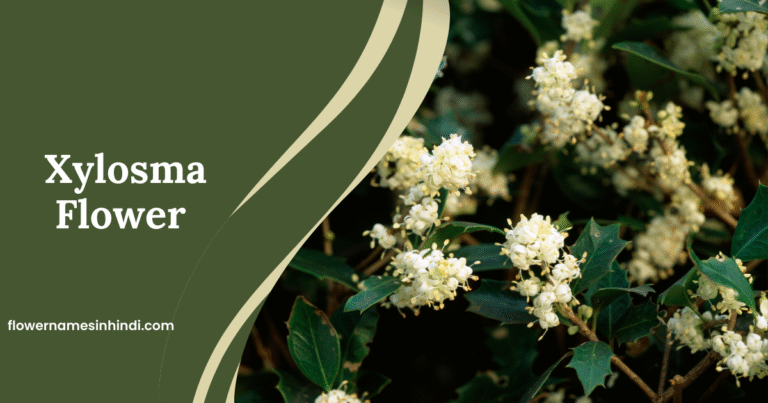
Xylosma is a genus of flowering plants in the Salicaceae family, commonly known as brush hollies or logwoods. Its name comes from the Greek words for “wood” and “smell,” referring to the pleasant fragrance of its wood.
These plants are valued for their versatility in landscaping and ability to grow in different environments. They have simple, glossy green leaves that are 2–10 cm long and may be smooth or slightly serrated. The small yellow or white flowers grow in clusters and add a delicate charm to the plant.
Xylosma plants are known to help filter and clean the air, making them great for eco-friendly landscapes.
| Botanical name | Xylosma |
| No. of species | About 100 species |
| Symbol | Resilience, adaptability, and versatility |
| Blooming time | Varies; generally blooms in spring or summer |
| Origin/ Native to | Asia, particularly tropical and subtropical regions |
Xanthorrhoea
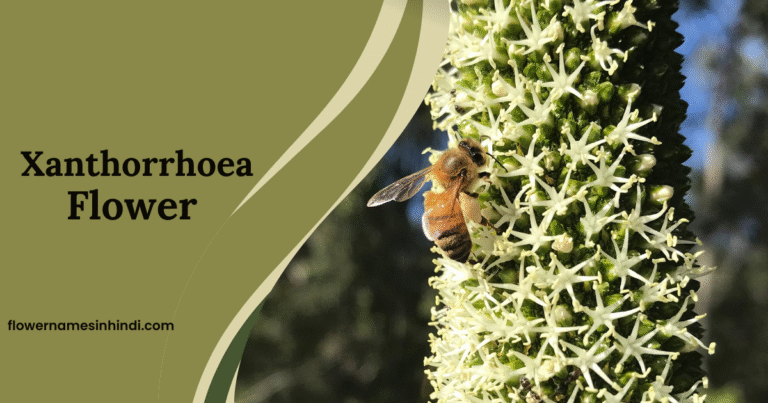
Xanthorrhoea, also called the grass tree, belongs to the Asphodelaceae family. It is a long-living plant native to Australia and is known by names like kangaroo tail, balga, and yakka in different regions.
The plant has long, narrow leaves that grow from a thick, woody base. It produces a tall flower spike, sometimes reaching up to four meters, covered with small white flowers that attract bees and birds.
| Botanical name | Xanthorrhoea |
| No. of species | Approximately 30 species |
| Symbol | Resilience, endurance, and longevity |
| Blooming time | Mainly in summer, but can vary with species |
| Origin/ Native to | Australia |
Conclusion of Flowers Beginning With X
Flowers that start with X are rare but very special. Their bright colours and unique shapes make them stand out in any garden. These blooms bring a fresh and distinctive touch to your space.
When you add X flowers to your garden, you make it more beautiful and different. They let you enjoy the rare and exotic wonders of nature.
Related articles:
- Flowers That Start With W
- Flowers Starting with V
- Flowers That Start with U
- Flowers that begin with T
- Hindi and English flowers names







